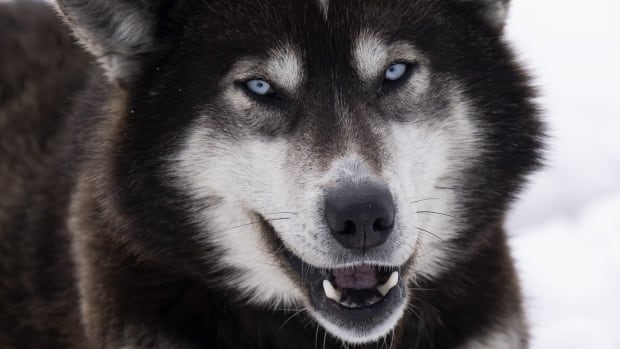The federal government says it will offer financial compensation to Inuit in Nunavik for the devastation caused by the mass slaughter of their sled dogs decades ago.
More than 1,000 of the dogs that Inuit relied on for their livelihoods were shot to death by Mounties, employees of the Hudson’s Bay Company and other authorities during the mid-1950s and late 1960s across Nunavik, the Inuit region of northern Quebec.
Crown-Indigenous Relations Minister Gary Anandasangaree told CBC News he will soon travel to the region to apologize on behalf of the federal government for the slaughter. He’s expected to make the trip before the end of the month.
“It destroyed the way of life,” Anandasangaree said. “It decimated people’s self-confidence…. And the impacts of that continue to linger today.”
Pita Aatami, president of the Makivvik Corporation — the organization representing Inuit in Nunavik, launched an investigation into the slaughter when he first heard about it in 1999.
“It hurt me so much,” Aatami said. “The pain that people went through with the loss of their mobility, the loss of their independence…. It’s something that is in my heart to try to resolve.”
Pita Aatami, president of the Makivvik Corporation, recalls the stories he was told about the sled dog slaughter in Nunavik.
Aatami has been calling for a federal apology and compensation ever since.
At the time, he said, authorities justified the slaughter by claiming the dogs presented a safety risk.
But Aatami said the dogs were killed to force the nomadic Inuit to remain in settled communities, where many turned to alcohol to numb the pain and became sick from losing their traditional way of life.
Aatami said the dogs were not pets. They were wolf-like animals the Inuit had used for hunting and transport for centuries.

In 2011, the government of Quebec apologized for the slaughter and gave former sled dog owners $3 million in compensation. Ottawa hasn’t offered compensation before now.
“It’ll mean a lot for the people that are still alive,” Aatami said. “It’s going to bring a little bit of a closure to a painful trauma that they went through with that, losing their livelihood.”
Killings led to loss of independence
For many, Aatami said, it feels like the killings happened yesterday. The pain remains raw and the trauma is intergenerational, he said.
The slaughter was carried out across all communities in Nunavik. Inuit were not consulted. The dogs were killed in front of families and crying children, said Aatami.
One woman Aatami spoke with said she pleaded with police to save one of her nine dogs.
“But the policeman didn’t listen,” Aatami said. “Shot all the dogs.”
Sometimes, the dogs didn’t die instantly and were left suffering from their gunshot wounds. Many of their bodies were then burned.

Losing their dogs changes the lives of Inuit forever, said Aatami
“They couldn’t go back to their camps,” Aatami said. “They couldn’t go back to their traplines. They couldn’t do anything anymore.”
The dogs were used during hunting trips to sniff out seals’ breathing holes in the sea ice and to pull sleds. They were also used for food during times when the Inuit faced starvation, said Aatami.
Without dogs, the only way Inuit could get around on land or ice was with snowmobiles. The machines were expensive and not as reliable as sled dogs, which could find their way home in blizzards.
Inuit eventually imported Huskies from Greenland to create new dog teams. Now, Inuit in Nunavik hold a yearly dog race spanning 400-500 kilometres each year.
Aatami said he expects the families of individual sled dog owners will receive federal compensation, with a portion of the cash set aside for cultural programming to educate young people on how to raise and care for sled dogs.
“The loss of identity was something Inuit were looking at and they’re gaining that back now,” Aatami said.
The upcoming federal apology is a meaningful step in improving relations between the federal government and Inuit in Nunavik, said Natan Obed, head of the national organization of Inuit.
“Not only does this fulfil an obligation, a solemn obligation of a government, I think it also unlocks potential for future positive collaboration so that those who have been wronged feel as though there is a respect for their humanity and an acknowledgement of guilt and harm,” said Obed, president of the Inuit Tapiriit Kanatami.
“That is an essential part of healing.”


